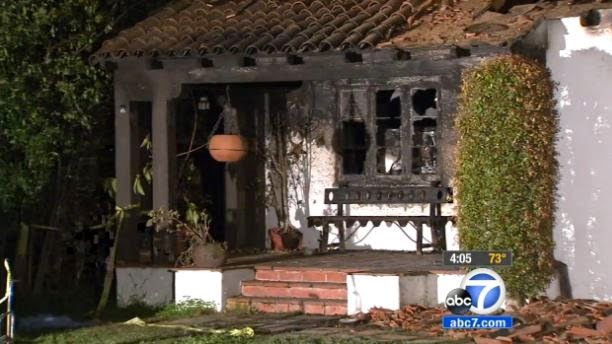MARCH 21, 2015
MILTON, NEW HAMPSHIRE
When medical oxygen is not used according to directions, the
patient and others are at risk of fire or explosions, burns, potential death as well as property
damage.
A 59-year-old man who died in a one-alarm fire Thursday
night at a Depot Pond Road residence had been smoking while using oxygen,
according to the New Hampshire State Fire Marshal's Office.
The cause and manner of death of Anthony Disciscio is
pending laboratory test results being conducted by the state Medical Examiner's
Office, according to District Chief Stacey Dubois of the Fire Marshal's Office.
The fire at 23 Depot Pond Road was reported just after 9
p.m. by a neighbor who heard the smoke alarm and reported that a person was
inside.
Firefighters extinguished the blaze, which was in the
kitchen, in about 20 minutes.
Disciscio died in the blaze. His body was found on the
kitchen floor, officials said.
The fire remains under investigation by the Fire Marshal's
Office, Milton fire and police.
Dubois said there was minimal damage to the home, where
Disciscio was a tenant.
She said preliminary indications are the fire was accidental
and "occurred as a result of smoking materials in close proximity to
medical oxygen."
In a news release jointly issued by State Fire Marshal J.
William Degnan, Milton Fire Chief Nicholas Marique and Milton Police Chief
Richard Krauss, Degnan issued a warning about the extreme dangers of smoking
while using or in proximity to medical oxygen.
Rapid fire development and increased intensity can occur,
causing serious injury or death, he said.
Smoking is the leading cause of burns, reported fires,
deaths and injuries involving home medical oxygen. About 73 percent of the medical
oxygen-related burns are caused by smoking.
Technically, fire is defined as a rapid oxidation process,
which is a chemical reaction resulting in the evolution of light and heat in
varying intensities.
Oxygen is one of
three parts of the fire triangle. A heat
source and fuel (something that can burn) are also required. Oxygen itself is not flammable. The heat triggers a chemical reaction between
the oxygen and fuel molecules. Normally,
air is 21% oxygen. Increased oxygen
makes more oxygen available for the chemical reaction, meaning that any fire
that occurs will burn faster and hotter.
Increased oxygen also lowers the temperature at which things
will ignite, including hair, clothing, plastic, skin oils, furniture, etc.
Because oxygen is colorless and odorless, elevated levels are not detectable by
human senses.
In many ignitions associated with home medical oxygen, only
the area around the patient’s face was enriched. However, melted tubing, leaks, and other
equipment breaches can result in a much larger enriched area.
Most of the medical literature on incidents involving home
medical oxygen has focused on patients treated at burn centers or included in
burn registries. In most cases, only the patient was hurt, although some
involved death to other household members or building occupants.
Source: The New Hampshire Union Leader, Manchester





